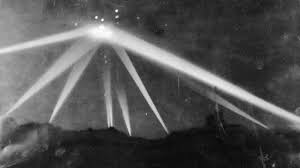Introduction
History is often thought of as a serious and straightforward recounting of past events, but it is also filled with bizarre and unusual incidents that defy explanation. These events, often overshadowed by more significant occurrences, provide a fascinating glimpse into the peculiar and unpredictable nature of human history. From dancing plagues to phantom wars, here are some of the weirdest historical events you might never have heard of.
The Dancing Plague of 1518

The Outbreak in Strasbourg
In July 1518, a strangest and strange and inexplicable phenomenon occurred in Strasbourg (then part of the Holy Roman Empire). A woman named Frau Troffea began dancing fervently in the streets. Within a week, dozens of others had joined her, dancing uncontrollably without rest. This event, later termed the Dancing Plague or Dance Mania, saw people dancing until they collapsed from exhaustion, and in some cases, death.
Theories and Explanations
Various theories have been proposed to explain this bizarre event. Some believe it was due to ergot poisoning, a hallucinogenic mold that grows on damp rye. Others suggest it was a form of mass hysteria or a psychogenic illness induced by stress and social conditions. Despite extensive study, the exact cause of the Dancing Plague remains a mystery.
The Great Emu War of 1932

The Unusual Battle
In 1932, Australia faced a unique problem: an overpopulation of emus wreaking havoc on wheat crops in Western Australia. The government responded by deploying soldiers armed with machine guns to combat the flightless birds. This event, known as the Great Emu War, saw the military engaging in several skirmishes with the emus.
The Outcome
Despite the military’s efforts, the emus proved to be surprisingly resilient, and the soldiers struggled to make a significant impact. The emus dispersed and continued to damage crops, leading to the campaign being deemed a failure. The Great Emu War is now remembered as a curious and somewhat humorous episode in Australian history.
The War of the Stray Dog
The Border Incident
In 1925, a minor incident escalated into an international conflict between Greece and Bulgaria. Known as the War of the Stray Dog, it began when a Greek soldier chased his runaway dog across the Bulgarian border and was shot by Bulgarian troops. In response, Greece invaded Bulgaria.
Resolution and Aftermath
The conflict was short-lived, with the League of Nations intervening to mediate peace. Greece was ordered to withdraw its troops and pay reparations to Bulgaria. The War of the Stray Dog is often cited as an example of how small incidents can escalate into larger conflicts.
The Cadaver Synod of 897
The Posthumous Trial
One of the most bizarre events in papal history is the Cadaver Synod, which took place in 897. Pope Stephen VI ordered the exhumation and trial of his predecessor, Pope Formosus, who had died nine months earlier. Formosus’ corpse was dressed in papal vestments, propped up on a throne, and put on trial.
The Verdict and Consequences
Formosus was found guilty of perjury and violating church law. His papal decrees were annulled, and his body was mutilated and thrown into the Tiber River. The Cadaver Synod caused widespread outrage and is considered one of the darkest and most surreal chapters in the history of the papacy.
The London Beer Flood of 1814
The Industrial Accident
On October 17, 1814, a massive vat of porter beer at the Meux and Company Brewery in London burst, causing a domino effect that led to over 1.4 million liters (over 300,000 gallons) of beer flooding the streets. The wave of beer destroyed homes and businesses in the densely populated St. Giles district.
The Human Impact
Tragically, the beer flood resulted in the deaths of eight people, mostly due to drowning and injuries caused by the force of the flood. The event highlighted the dangers of industrial accidents in urban areas and remains one of the strangest disasters in London’s history.
The Siege of Caffa and Biological Warfare
The Black Death and the Siege
In 1346, during the Siege of Caffa (now Feodosiya, Ukraine), the attacking Mongol army, afflicted by the Black Death, used an early form of biological warfare. They catapulted the infected corpses of their soldiers over the city walls, intending to infect the inhabitants.
The Spread of the Plague
This tactic is believed to have contributed to the spread of the plague to Europe, as fleeing residents of Caffa carried the disease to Mediterranean ports. The Siege of Caffa is a chilling example of how biological warfare has been used throughout history and its devastating consequences.
The Salem Witch Trials
The Hysteria in Salem
The Salem Witch Trials of 1692-1693 were a series of hearings and prosecutions of people accused of witchcraft in colonial Massachusetts. The trials resulted in the executions of 20 people, mostly women, and the imprisonment of many others.
Causes and Legacy
Historians believe that a combination of social, political, and religious factors, along with mass hysteria and possible ergot poisoning, led to the witch trials. The Salem Witch Trials remain a cautionary tale about the dangers of scapegoating and the importance of due process.
The Affair of the Poisons
The Scandal in France
The Affair of the Poisons was a major scandal in France during the reign of King Louis XIV. Between 1677 and 1682, numerous members of the French aristocracy were implicated in a network of poisoners, witches, and fortune-tellers who sold potions and poisons.
The King’s Response
The scandal led to widespread fear and paranoia, resulting in the execution of several key figures. King Louis XIV established a special court, the Chambre Ardente, to investigate and prosecute the crimes. The Affair of the Poisons exposed the dark underbelly of the French court and highlighted the era’s obsession with alchemy and the occult.
The Great Stink of 1858
The Pollution Crisis
In the summer of 1858, a severe heatwave exacerbated the already dire state of the River Thames in London, which was heavily polluted with raw sewage. The resulting stench, known as the Great Stink, overwhelmed the city and disrupted government operations.
The Impact on Public Health
The Great Stink brought attention to the urgent need for proper sanitation and clean water. It led to the construction of the modern London sewer system, designed by engineer Joseph Bazalgette, which significantly improved public health and hygiene in the city.
The Tunguska Event
The Mysterious Explosion
On June 30, 1908, a massive explosion occurred near the Tunguska River in Siberia, flattening an estimated 2,000 square kilometers of forest. The explosion is believed to have been caused by the airburst of a meteoroid or comet, but no impact crater or definitive evidence has been found.
Theories and Speculations
Various theories have been proposed to explain the Tunguska Event, including a comet, a meteoroid, a natural gas explosion, or even a small black hole. Despite extensive research, the exact cause of the explosion remains a mystery.
The Taiping Rebellion
The Religious Uprising
The Taiping Rebellion (1850-1864) was a massive civil war in China led by Hong Xiuquan, who claimed to be the younger brother of Jesus Christ. He established the Taiping Heavenly Kingdom and sought to overthrow the Qing Dynasty.
The Devastating Conflict
The Taiping Rebellion resulted in the deaths of an estimated 20 to 30 million people, making it one of the deadliest conflicts in history. The rebellion ultimately failed, but it had a profound impact on Chinese society and the Qing Dynasty.
The Ghost Army of World War II
The Deception Unit
During World War II, the U.S. Army created a top-secret unit known as the Ghost Army, tasked with conducting deceptive operations to mislead German forces. The unit used inflatable tanks, sound effects, and fake radio transmissions to create the illusion of large troop movements.
The Success of the Operations
The Ghost Army’s operations were highly effective, contributing to the success of several key Allied campaigns, including the D-Day invasion. The unit’s existence remained classified until the 1990s, and it is now recognized as one of the most successful deception efforts in military history.
The Battle of Los Angeles

The Air Raid Scare
On the night of February 24-25, 1942, air raid sirens sounded across Los Angeles, prompting a blackout and the firing of over 1,400 anti-aircraft shells into the sky. The event, known as the Battle of Los Angeles, was sparked by fears of a Japanese attack following the bombing of Pearl Harbor.
The Aftermath
Despite the intense barrage, no enemy aircraft were found, and the incident was later attributed to a false alarm, possibly caused by weather balloons or a case of war nerves. The Battle of Los Angeles remains a strange and unexplained wartime incident.
The Riddle of the Sphinx
Also Read Netflix & Chill: 10 Must Watch Rom-Coms of the Early 2000s
The Construction
The Great Sphinx of Giza, with its lion’s body and human head, has fascinated historians for centuries. Its precise construction methods and the purpose of the Sphinx remain topics of debate. Built during the reign of Pharaoh Khafre, it stands as a testament to ancient Egyptian engineering.
The Purpose
Theories about the purpose of the Sphinx range from it being a guardian of the Giza Plateau to a symbol of solar worship. Some even suggest it might hold hidden chambers or secrets beneath its paws, waiting to be discovered
The Mystery of the Moai Statues
The Statues of Easter Island
The Moai statues on Easter Island are one of the most recognizable and enigmatic archaeological sites in the world. These massive stone figures, with their oversized heads, were carved by the Rapa Nui people between 1400 and 1650 AD.
How Were They Moved?
One of the biggest mysteries surrounding the Moai statues is how they were transported across the island. Theories suggest the use of log rollers, sledges, or even that they “walked” to their locations with the help of ropes and manpower. The exact method remains unclear.
The Disappearance of Amelia Earhart
The Pioneering Aviator
In 1937, Amelia Earhart, the famed aviator, disappeared over the Pacific Ocean while attempting to circumnavigate the globe. Despite extensive search efforts, neither Earhart nor her plane was ever found.
Theories and Speculations
Various theories about her disappearance include crashing into the ocean, being captured by the Japanese, or landing on an uninhabited island. The mystery of her fate continues to spark investigations and fuel the imagination.
The Mystery of the Anasazi
The Ancient Civilization
The Anasazi, also known as the Ancestral Puebloans, were a Native American culture that thrived in the Four Corners region of the United States. They are known for their cliff dwellings and intricate pottery.
Sudden Disappearance
Around the late 13th century, the Anasazi abruptly abandoned their settlements, leaving behind impressive structures. The reasons for their sudden departure remain unknown, with theories ranging from drought and resource depletion to social upheaval and conflict.
The Enigmatic Antikythera Mechanism
The Ancient Computer
Discovered in a shipwreck off the coast of the Greek island Antikythera, the Antikythera Mechanism is an ancient Greek analog computer dating back to around 100 BC. It was used to predict astronomical positions and eclipses.
Advanced Technology
The complexity and precision of the Antikythera Mechanism have astounded historians and engineers, leading some to question how such advanced technology existed in ancient Greece. Its origins and the extent of similar technology remain a fascinating mystery.
Conclusion
History is filled with weird and wonderful events that often go unnoticed in the grand narratives. From dancing plagues to emu wars, these bizarre occurrences remind us that truth is sometimes stranger than fiction. Exploring these weird historical events not only entertains but also offers valuable lessons about human nature and the unpredictability of our past.
FAQs
1. What was the Dancing Plague of 1518?
The Dancing Plague of 1518 was a bizarre event where residents of Strasbourg danced uncontrollably for days, resulting in exhaustion and even death. The cause remains a mystery, with theories including ergot poisoning and mass hysteria.
2. What was the Great Emu War?
The Great Emu War was a 1932 Australian military operation to control emu populations that were damaging crops. Despite using machine guns, the emus proved resilient, and the campaign was deemed a failure.
3. What was the London Beer Flood of 1814?
The London Beer Flood of 1814 occurred when a massive vat of porter beer burst, causing over 1.4 million liters of beer to flood the streets, resulting in the deaths of eight people.
4. What caused the Tunguska Event?
The Tunguska Event’s cause is debated, with theories including a comet, meteoroid, or natural gas explosion. The exact explanation remains unresolved.
5. What happened to Amelia Earhart?
Amelia Earhart disappeared over the Pacific Ocean in 1937 while attempting to circumnavigate the globe. Various theories exist, but her fate remains a mystery.


